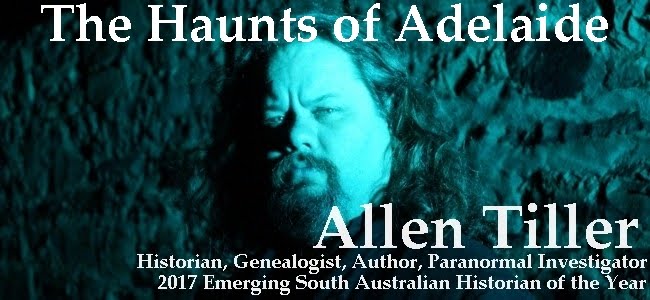Mallala Museum - Hidden Secrets
<start transcript>
In 1877, the Mallala Milling Company was floated with a
capital investment of ten thousand pounds. A site in the township was chosen
and James Martin and Co of Gawler were contracted to build all the machinery
and carpentry for the new Mallala Mill.
The foundation stone was laid on 26 July 1878 by Miss M.A. Chivell, who was
presented with a silver trowel for her efforts.[1]
The Mill was opened by Mr W. Cavanagh M.P. on Tuesday 18
March 1879.
The completed building was three stories tall, built from
hammer-dressed limestone, with brick quoins and cement dressings. At the rear was a shed that contained a
Cornish boiler manufactured at James Martin and Co in Gawler. The boiler drove
a horizontal engine of 22 horsepower, with a flywheel weighing three tons.
The mill consisted of three pairs of
French burr stones, each being 3 feet and 8 inches in diameter.[2]
On 31 August 1880, just after 12 noon, the boiler at the
Mallala Mill exploded. Mr Armfield, the Mills engineer had just been to check
on the boiler and returned to the engine room when the accident happened. The
boiler exploded, blowing down half of the boiler-house walls and bursting
numerous pipes. The explosion blew the roof of the engine and boiler room
houses and shattered the base of the chimney stack. Luckily, no one lost their
lives, as most workers had gone to lunch, however, Mr Armfield received some
head injuries from flying debris
When the mill closed, the inner workings, the steam engine and grinder were removed and used at the Blyth Mill.[3] Mathew Henry East held the title in 1909, and in 1933, East Brothers and Co took possession
In 1947 the 50-foot-tall chimney, made from over 6000 bricks, that had been built in 1878 was demolished. It had been declared unsafe and a risk to the buildings nearby
The Mallala and Districts Historical committee was formed in 1968, and in 1970, the Adelaide Plains Council bought Mallala Flour Mill to be
used as a museum. The museum holds a comprehensive military display of local
involvement, farming machinery, an REO Speedwagon Fire Engine, displays of old
typewriters, toys, blacksmith forge, and Mr Temby’s penny-farthing, which was
ridden in the Adelaide Xmas Pageant by Lance Tiller. The Long Plains Schoolroom has many displays, and recently, in 2021, a new upstairs gallery was
opened and dedicated to long term volunteer, the late Margaret Tiller.
The Mallala Museum is considered one of the finest local
heritage museums in South Australia. It is open every Sunday afternoon from 2pm
until 4:30pm and is run by volunteers. <end transcript>
© 2021 Allen Tiller
[1] 'Laying the Foundation Stone of Mallala Flour Mill', Yorke's Peninsula Advertiser, (6 August 1878), p. 4.
[2] 'Opening of the Mallala Mill.', South Australian Register, (20 March 1879), p. 1.
[3] 1947 'Out Among The People', The Advertiser (Adelaide, SA : 1931 - 1954), 15 April, p. 4. , viewed 14 Aug 2021, http://nla.gov.au/nla.news-article30522934


